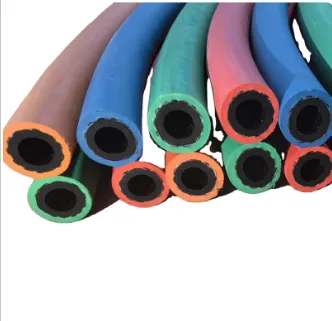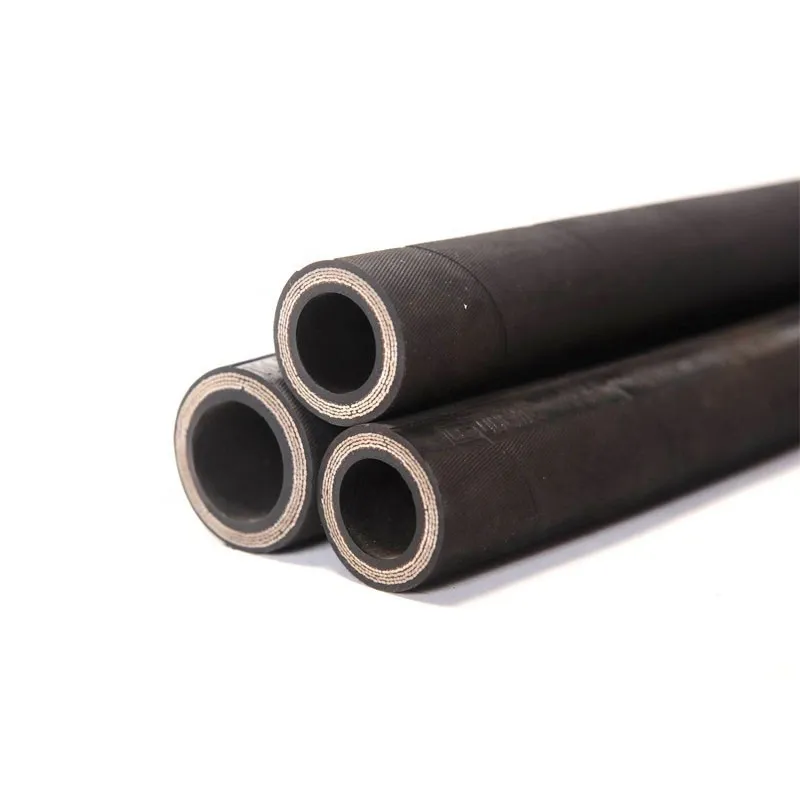
2 月 . 14, 2025 10:42 Back to list
what are hydraulic hoses made of


The synthesis of these material layers into a cohesive hose structure requires expert engineering and rigorous testing to ensure the product not only meets but exceeds industry standards. The stringent manufacturing processes and quality control measures involved confirm the reliability and efficiency of hydraulic hoses, making them indispensable in various sectors such as construction, agriculture, automotive, and aerospace. Innovative manufacturing technologies are continuously advancing the design and capabilities of hydraulic hoses. For instance, developments in digital prototyping and 3D modeling have enabled manufacturers to optimize hose design, ensuring a better fit and function for specific applications. Furthermore, materials science continues to play a pivotal role, with the emergence of lightweight yet robust materials. These advancements not only enhance performance but also address environmental concerns by improving energy efficiency and reducing emissions related to manufacturing and operational use. The choice of hydraulic hose must align with the specific requirements of the application. Factors such as the type of hydraulic fluid, pressure parameters, environmental conditions, and mechanical loads must all be considered during the selection process. Experts recommend consulting with manufacturers or industry specialists when determining the appropriate hose, as their expertise is crucial in ensuring that you select the most suitable and durable typology for your needs. Trust in the reliability of hydraulic hoses is forged through experience, expertise, and a commitment to quality. Manufacturers with established track records provide assurance of durability, safety, and performance consistency. Relying on reputable suppliers who adhere to international standards is vital, not only for ensuring operational efficiency but also for maintaining safety across all applications. In conclusion, understanding what hydraulic hoses are made of entails recognizing each layer's functional significance and the collective synergy they provide. The promiscuous integration of advanced materials and engineering techniques presents an indispensable resource pivotal to numerous industries, continuously evolving to meet the demands of modern engineering challenges.
Latest News
Steel Wire Reinforced Hydraulic Hose SAE 100 R1 / EN853 1SN S
NewsOct.17,2024
Two Layers Steel Wire Reinforced Hydraulic Hose SAE 100 R2 / EN853 2SN
NewsSep.03,2024
Textile Braid Reinforced Hydraulic Hose SAE100 R3+R6
NewsSep.03,2024
Textile Reinforced Hydraulic oil Suction Hose with embedded Steel Wire SAE 100 R4
NewsSep.03,2024
Single Wire Braid and Textile Covered Hydraulic Hose SAE 100 R5
NewsSep.03,2024
High Pressure Thermoplastic Hydraulic Hose SAE 100 R7 / EN855 R7 - SAE 100 R8 / EN855 R8
NewsSep.03,2024
Heavy Duty Four-layer Steel Wire Spiral Reinforced Hydraulic Hose SAE100R9+R10+R12
NewsSep.03,2024
Heavy Duty Multi-layer Steel Wire Reinforced Hydraulic Hose SAE100R13 SAE100R15
NewsSep.03,2024
Latest Products











